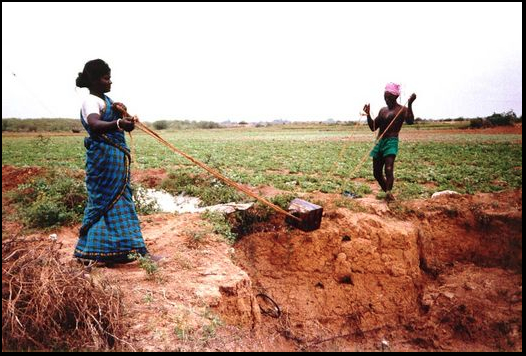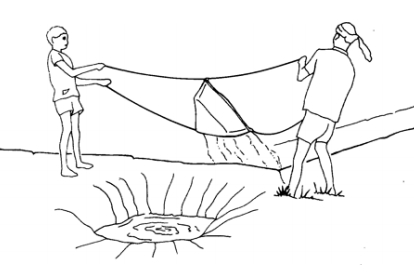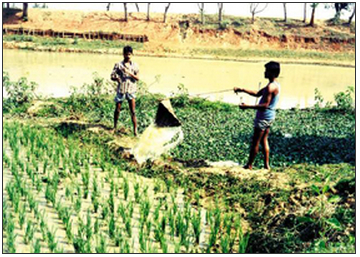Swing basket
| |
|
|
|
|
|
|
|
|

The swing basket is made from cheap materials like woven bamboo strips, leather, or iron sheet to which four ropes are attached. Two people hold the basket facing each other, they dip the basket into the surface water and the basket is lifted by swinging it and emptied into an irrigation channel from which point the water flows to the fields. The work demands heavy physical activity, with adoption of awkward body movements and posture. Yet it can also be operated by women and minor members of the family. The frequency of operation is about 15 to 20 swings/minute. This lifter can be used at depths of up to 1.2 m. Typical flow rates of 60 to 80 l/min are obtained at depths of 0.75 m.
Suitable conditions
Swing baskets are popular in India and Bangladesh.
| Advantages | Disadvantages |
|---|---|
| - Simple, inexpensive technology which can be locally made and maintained - Easy to operate by both adults and children |
- Limited to lifts of less than 1.2 m - Limited water yield 60-80 l/min suitable for small fields |
 Lifting water from irrigation channel using a swing basket. Photo: MANUAL OPERATIONS IN FARMING. |
 Using a swing basket to dump water into an irrigation canal. Drawing: Practical Action. |
 Direct irrigation onto field using the swing basket. Photo: Banglapedia. |
Acknowledgements
- Jane Olley. HUMAN & ANIMAL POWERED WATER-LIFTING DEVICES FOR IRRIGATION. Practical Action, November 2008.
- MANUAL OPERATIONS IN FARMING. International Labor Organization.
